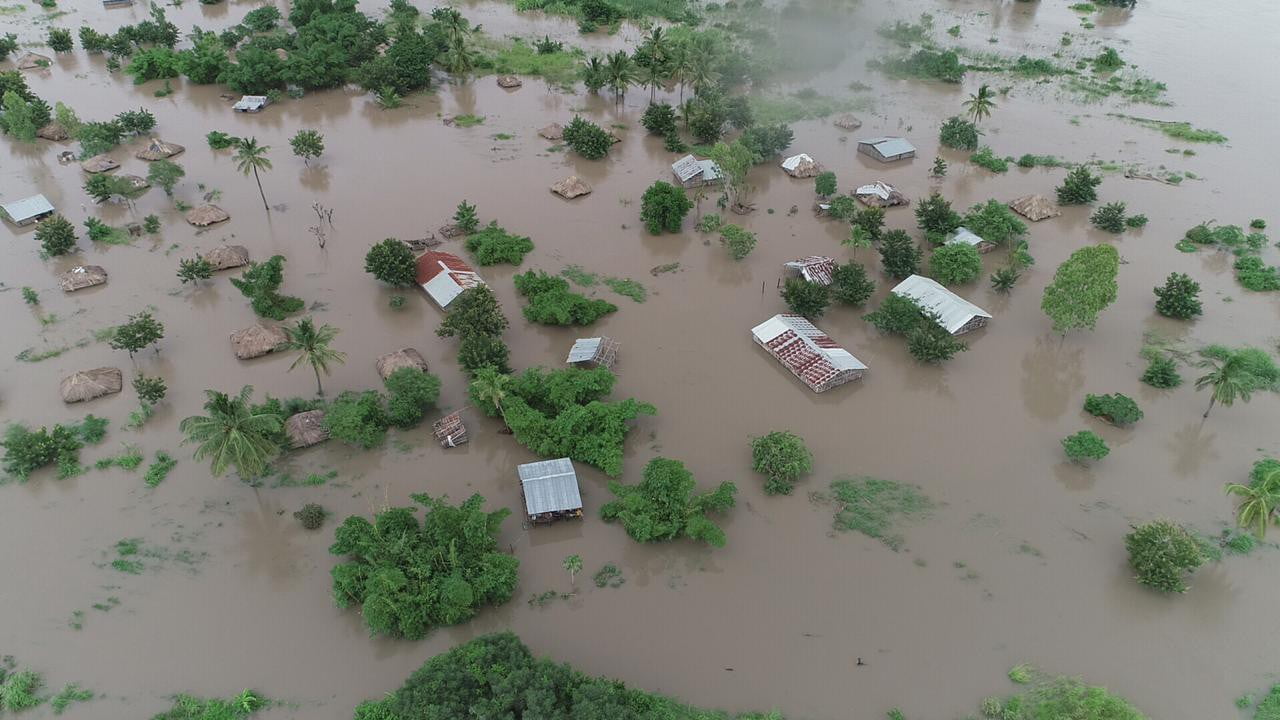Cyclone Idai is one of the most destructive storms to hit this region of Africa in decades. The death toll is still unknown, but likely to be in the thousands. Hundreds of thousands of people in Zimbabwe, Malawi and Mozambique have been displaced and vast numbers of houses, structures and farmlands have been destroyed.
Mozambique is the hardest with vast stretches of land submerged.
From Save the Children
According to the Government of Mozambique, 600,000 people have been affected, more than 1,000 people may have lost their lives and 100,000 need to be urgently rescued near Beira.
Aerial assessments in Sofala province, in the center of the country, show that an area more than 30 miles wide has been completely submerged. They also show that Buzi town, which is estimated to be home to more than 2,500 children*, could be under water within 24 hours.
“The scale of this disaster is growing by the minute and Save the Children has grave concerns about children and their families still at risk as flood waters continue to rise,” said Machiel Pouw, Save the Children’s response leader in Mozambique.
“The assessment emerging from Mozambique today is chilling. Thousands of children lived in areas completely engulfed by water. In many places, no roofs or tree tops are even visible above the floods. In other areas, people are clinging to rooftops desperately waiting to be rescued.
The UN’s International Disaster Relief System Has Been tapped.
When a crisis like this strikes where government lacks the capacity to deal with the disaster on its own, the United Nations system for rapid humanitarian response snaps into place. UN humanitarian agencies like the World Food Program and UNICEF, and international NGOs like Save the Children and Oxfam coordinate their responses through the UN’s Office for the Coordination of Humanitarian Affairs, or OCHA.
This system has become incredibly efficient in recent years, with specific agencies and NGOs in charge of discrete aspects of the response. This is known around the UN as the “cluster system” and was developed by OCHA following uncoordinated and duplicated responses to the 2004 Indian Ocean Tsunami. This modern form of international disaster relief is able to relatively swiftly get food, medicines and personnel to places affected by a sudden disaster, saving countless lives over the years.
Cyclone Idai has triggered that response mechanism.
From the WFP
Food stocks are being identified in all three countries, as well as in South Africa and Zambia. Twenty tons of high-energy biscuits are being airlifted to Beira from a WFP-run emergency response depot in Dubai. The organization has contracted a transport helicopter to fly into cut-off regions, and is funding drones to support Mozambique’s disaster management agency, the INGC, with emergency mapping. Field personnel, including logistics and telecoms experts, are being deployed.
From UNICEF
UNICEF is working with partners to support the Governments of the affected countries to provide life-saving interventions to meet the needs of children and women impacted by the cyclone and floods. The response will include Health, with a focus on cholera response and prevention; Education, to minimize service disruption and enhancing safe access to schools; Protection, catering particularly to the needs of internally displaced persons (IDPs); WASH, to ensure access to clean and safe water, increased use of sanitation facilities and hygiene promotion and; Nutrition, focusing on preventing under-five mortality attributable to malnutrition.
One complicating factor in every response to a crisis like this is funding. UN agencies like UNICEF and WFP are funded like charities. They require constant fundraising, mostly from donor countries, to maintain their emergency relief operations. (And, recently, the Trump administration has sought to eliminate American funding for UNICEF). This means that when a disaster like this strikes, these agencies must go to donors, hat in hand, to fund their response. All to often, donors do not rise to the occasion. In 2018, every disaster in the world –manmade and natural — required $24.9 billion for relief agencies but only about half was actually raised.
So, even as UN agencies are getting more and more efficient at saving lives in disaster, their ability to do so is constrained by constant funding shortages. To the extent that Cyclone Idai can capture the attention of key donors, these agencies will be able to reach more of the hundreds of thousands of people of Mozambique, Malawi and Zimbabwe who are effected by this crisis.
